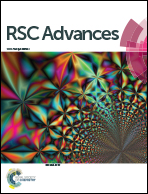Effect of sodium doping on the microstructure, lattice distortion and magnetic properties of GdMnO3 tiny single crystals
Abstract
Perovskite structured undoped and 10 mol% monovalent Na-doped GdMnO3 compounds are prepared by the sol–gel method. Sintering of these compounds at 1000 °C for 12 h results in the formation of well grown, defect-free tiny single crystals of size ∼200 nm. Detailed microstructural analyses of the compounds are done by Rietveld analysis of the XRD patterns. Refined structural and microstructural parameters obtained from the Rietveld analysis suggest that Na doping in GdMnO3 reduces the octahedral and Jahn–Teller distortion and increases the structural stability of the compound. EDX analysis confirms the expected composition of the prepared compounds. Microstructure modification due to Na doping is correlated with modification in magnetic ordering. Temperature and magnetic field dependent magnetization measurements reveal the alteration of the low temperature magnetic behavior of GdMnO3 on 10 mol% Na doping. The Mn spin ordering temperature of GdMnO3 increases from 44 K to 51 K after doping. A high coercive field of 749 Oe of GdMnO3 and 589 Oe of Gd0.9Na0.1MnO3 at 5 K is recorded from M–H measurements. Monovalent Na doping in GdMnO3 decreases structural distortion and increases the magnetic transition temperature.


 Please wait while we load your content...
Please wait while we load your content...